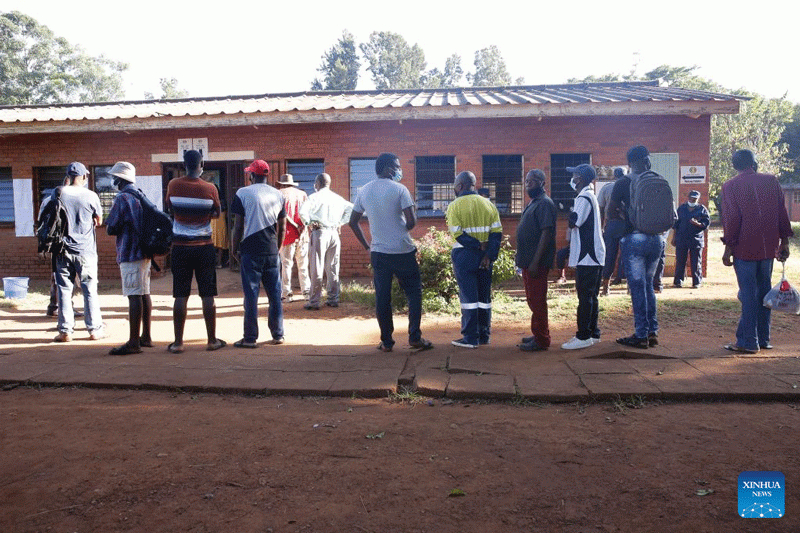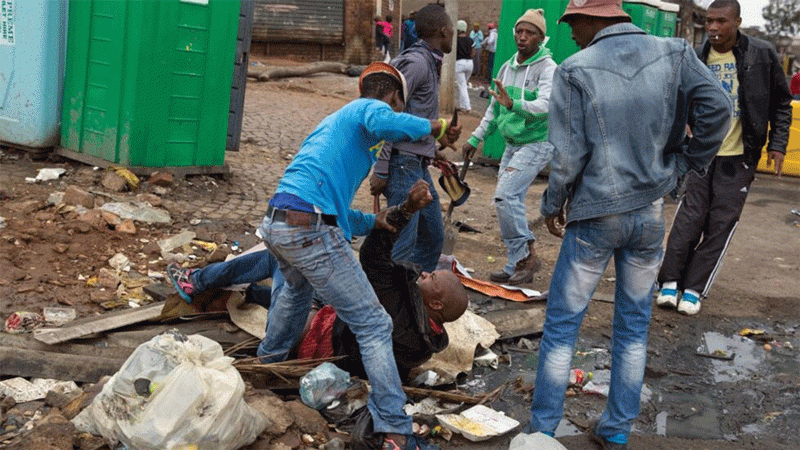
THE Zimbabwe Election Support Network (Zesn) welcomes the proclamation of the 2023 harmonised elections.
Under Statutory Instrument 85 of 2023, President Emmerson Mnangagwa fixed August 23, 2023 as polling day and June 21 as the date on which nomination courts will sit countrywide to accept applications by political parties and their candidates to take part in the polls.
The network commends government for implementing some electoral reforms which include the ratification of the African Charter on Democracy, Governance and Elections; the amendment of the Census and Statistics Act to push forward the population census to pave way for the delimitation of electoral boundaries; the amendment of the Constitution which saw the introduction of the youth quota in the National Assembly and the extension of the women’s quota by a further 10 years in the National Assembly.
Zesn is cognisant of section 157(5) of the Constitution, which provides that after an election has been proclaimed, no change to the electoral law or any other law on elections will apply for that election.
This means that 2023 elections are being held with no legal reforms given the fact that the Constitution requires election of everyone to be in accordance with the electoral law; which is the Electoral Act.
Zesn notes that the failure of the Electoral Amendment Bill to sail through before the proclamation was made means the constitutional provisions on youth quota and proportional representation cannot be applied or implemented. The result is that the youth quota and the proportional representation provisions fall away for now. They await implementation in 2028.
The network also commends the Zimbabwe Electoral Commission (Zec) for implementing the following administrative issues: Zec now informs registrants who would have been removed from the voters roll by publishing names in the Government Gazette.
Another positive change noted is that Zec is now cleaning the voters roll continuously and voters roll inspection is now being done both physically and electronically as recommended by the observer missions.
- Mr President, you missed the opportunity to be the veritable voice of conscience
- ED to commission new-look border post
- Zanu PF ready for congress
- Zanu PF ready for congress
Keep Reading
The electoral management body now reviews and updates voter education manual before elections, and the posting of voters roll outside each polling station is now a reality in Zimbabwean elections.
However, there are some outstanding reforms which Zesn had anticipated to have been addressed ahead of the 2023 polls and these are: the need to create a conducive electoral environment that will see the effective participation of citizens without fear; availing of the voters roll; the need for tactile ballot papers to ensure secrecy of the vote; a review of the accreditation fees and opening up the space to allow long term observation by domestic observers; the need to ensure there are punitive measures are put in place to address the violence that affects women’s participation in politics and elections as well as implementation of the 50/50 constitutional provision.
In view of the foregoing, the network implores government through the Justice, Legal and Parliamentary Affairs ministry to consider the incorporation of the youth quota in the National Assembly and the women’s quota in local authorities which are both products of the Constitution of Zimbabwe Amendment (No 2) Act as part of efforts to increase their representation and participation in electoral processes.
Furthermore, Zesn urges government to comply with the matrix they developed on arrears clearance and debt resolution, in particular on electoral reforms, to ensure peaceful and transparent elections.
Under electoral reforms, the strategy seeks to implement the following essential and accepted electoral reforms from the reports of 2018 election observer missions; Zec and Political Actors Dialogue and to strengthen and capacitate electoral institutions to deliver on their mandate.
The matrix’s targets and outcomes are enhanced freedom of assembly and association; political pluralism; democratic elections conducted regularly and the promotion of civil society activities. - Zesn
A lot still needs to be addressed with regards debt management
THE Zimbabwe Coalition on Debt and Development (Zimcodd), African Forum and Network on Debt and Development and partners organised the 5th edition of the Zimbabwe Debt Conference bringing together various stakeholders drawn from government ministries, departments and agencies, oversight institutions, commissions, academia, national and regional civil society organisations.
At the conference, it was noted that the motive for some loans is commendable, but, however, some of the borrowed funds are invested in sectors that do not have the capacity for repayment.
A case in point is the agricultural sector through various farm mechanisation programmes and public enterprises’ debt.
The existence of these external debt payment arrears and penalties remains a major obstacle to the achievement of the National Development Strategy 1 (NDS1) objectives and the attainment of Vision 2030.
If properly managed, Zimbabwe’s vast mineral resources can be leveraged on and contribute to addressing debt challenges in Zimbabwe. However, the mining sector is the highest emitter of illicit financial flows.
The second high-level structured dialogue platform meeting and the crafting of the arrears clearance strategy demonstrate the determination of Zimbabwe to address the debt question.
The conference acknowledges efforts by government in fighting corruption, particularly the development and launch of the National Anti-Corruption Strategy, among other legislative and institutional reforms to improve public finance management. Gaps in implementation were also noted.
Various Parliamentary Portfolio Committees, the Public Accounts Committee, in particular are making efforts to improve debt management through conducting public hearing meetings to understand the state of indebtedness within parastatals and are pushing for reforms, especially in accounting standards.
Parliament as a whole is not effectively performing its functions as far as debt management is concerned as legislators’ active participation is affected by the whipping system.
The High Court recently ruled in favour of Zimcodd in a case where the coalition sought to compel the Finance minister to amend the Public Debt Management Act and strengthen parliamentary oversight role in public debt management.
Of concern is the continued issuance of government guarantees to non-viable private and public entities.
Also, the growing local government debt and resultant poor service delivery were noted as a concern as well as continued mortgaging of natural resources against external loans.
The issue of legislative and systemic gaps within the mines and minerals sector giving rise to corruption, smuggling and illicit financial flows needs to be addressed as well. - Zimcodd
Deficit-producing areas face quick own-produced stocks depletion
THE 2023 harvest is ongoing for large-scale farmers and households in the resettlement areas, but is largely complete across the rest of the country.
The harvest is improving food availability and driving widespread Stressed (IPC Phase 2) outcomes in deficit-producing areas and Minimal (IPC Phase 1) outcomes in surplus-producing areas.
However, for some typical deficit-producing areas in the south, east, west, and extreme north, own-produced stocks will be short-lived due to relatively low production.
Crisis (IPC Phase 3) outcomes will likely emerge the worst affected areas by August/September.
In the typical surplus-producing areas, worst-affected households will likely begin facing Stressed (IPC Phase 2) outcomes by September as food stocks decline.
By the end of May, the parallel, official auction system and interbank exchange rates increased by about 100% to 150% compared to last month, marking a significant depreciation of the Zimdollar.
In some formal retail outlets, there are reports of artificial shortages of some basic food items as some wholesalers and retailers allegedly diverted stocks to the black market, which operates exclusively in United States dollars.
The depreciation of the Zimdollar and high prices increasingly negatively impacts the purchasing power of poor households and households earning in Zimdollar.
Some basic commodity Zimdollar prices spiked by more than 100% in May, though prices in US dollars remained relatively stable.
In response, among other measures, government removed all import duties and restrictions for 14 basic commodities, including maize meal, flour, cooking oil, rice, milk, and salt, to ensure adequate supply and cheaper commodities.
Companies can also retain all their foreign currency earnings in-country to reduce demand for foreign currency on parallel and official markets and help stabilise the Zimdollar.
The ongoing harvest is improving household food access and increasing market supplies of staple grains, particularly maize, in most markets.
Relatedly, maize prices in US dollars are declining, especially in typical surplus-producing areas.
However, maize prices in Zimdollars continue to increase, driven by the depreciation of the Zimdollar on the parallel market.
In typical surplus-producing areas, some households have started earning income from selling food and cash crops.
However, in some typical deficit-producing areas, a below-normal harvest will likely constrain household income from crop sales.
Across the country, households are increasing their engagement in various casual labour opportunities, self-employment and petty trade to earn additional income following the end of the harvest.
However, income will likely continue to be impacted by low demand and limited liquidity by better-off households, especially in typical deficit-producing areas. - Famine Early Warning Systems Network











